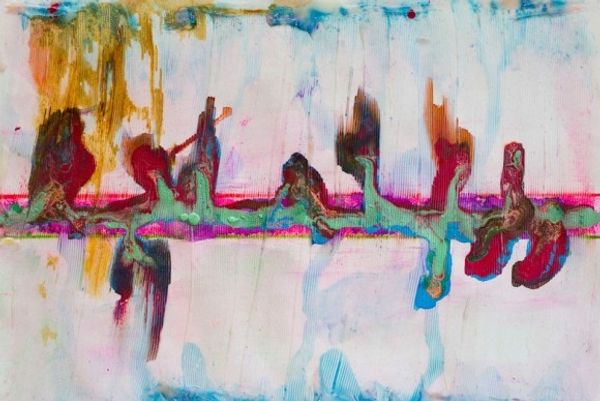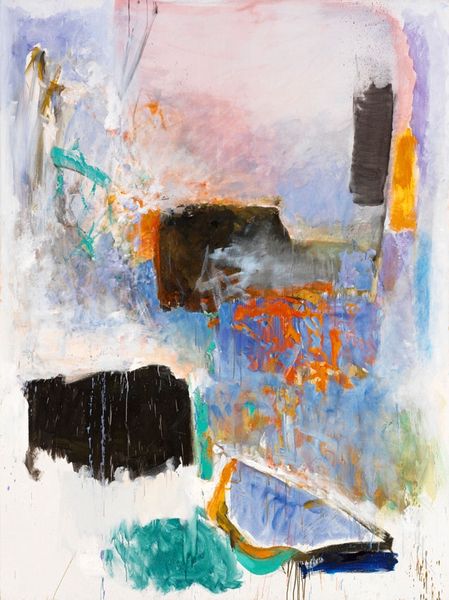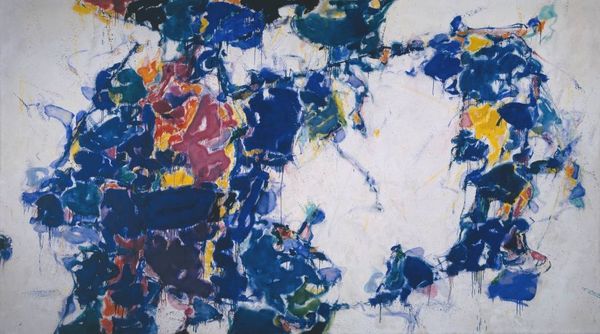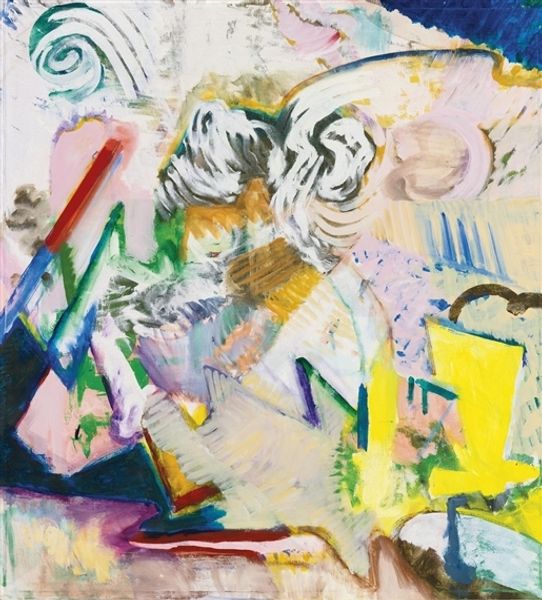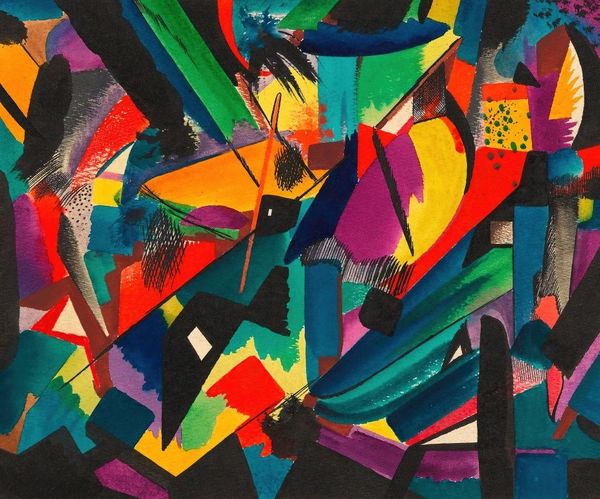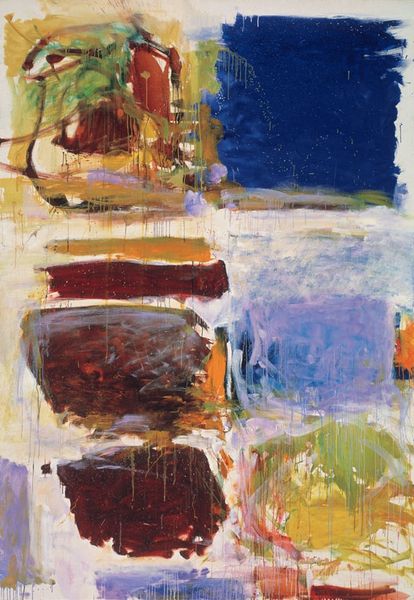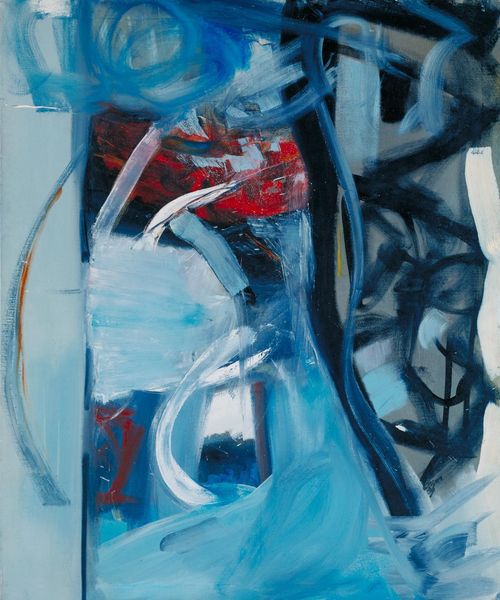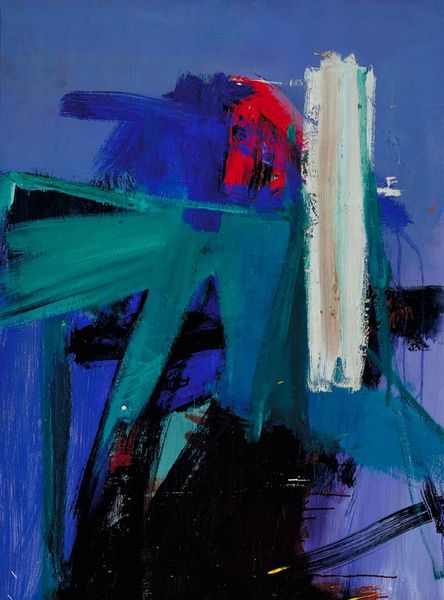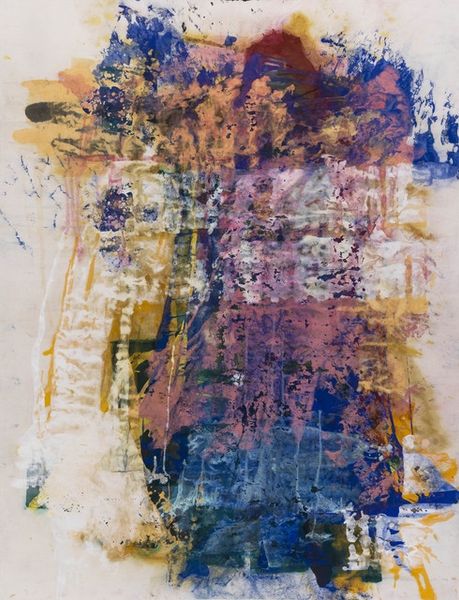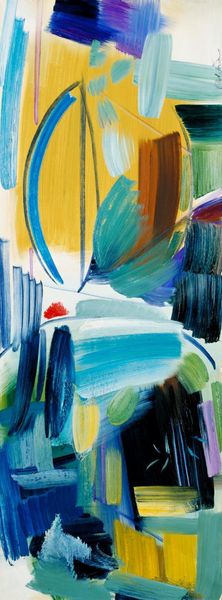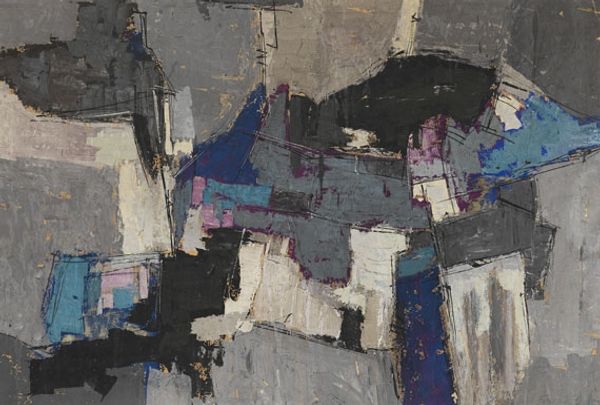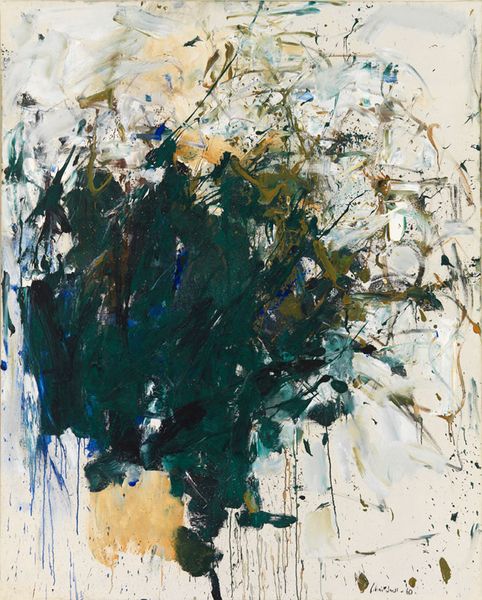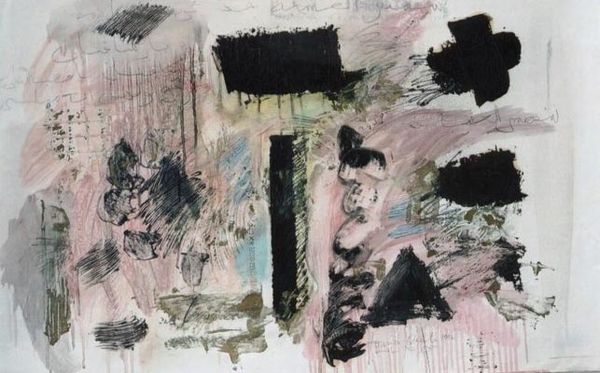
mixed-media, painting
#
abstract-expressionism
#
abstract expressionism
#
mixed-media
#
abstract painting
#
painting
#
form
#
abstraction
Dimensions: overall: 210.82 × 119.38 cm (83 × 47 in.) framed: 216.75 × 124.46 × 6.35 cm (85 5/16 × 49 × 2 1/2 in.)
Copyright: National Gallery of Art: CC0 1.0
Editor: Here we have Judith Godwin's "Seated Figure," made in 1955 using mixed media. The painting feels chaotic yet controlled, with blues, blacks, and purples battling for space. What social or historical contexts might illuminate our understanding of it? Curator: Godwin worked within Abstract Expressionism during the Cold War era, a time marked by anxieties about conformity and the individual. This movement, embraced by American institutions, subtly championed values of freedom against the perceived restrictions of Soviet art. Do you see a tension in Godwin's work between form and formlessness, or perhaps, freedom and constraint? Editor: I definitely see the push and pull. The 'seated figure' isn’t obvious at all, and yet there's something inherently structural in the composition. It almost feels like a deconstructed monument. Curator: Precisely. Consider the historical role of monuments: usually celebrations of power and collective identity. By the mid-20th century, such grand narratives were being questioned. Godwin's piece seems to grapple with these shifts, reflecting anxieties about representation and the authority of institutions during a period of intense social and political upheaval. How might that understanding influence how we see Abstract Expressionism's reception at the time? Editor: So, the seeming lack of figurative representation isn't a simple move towards abstraction; instead, it can be interpreted as a comment on the changing values in post-war society. Curator: Absolutely. "Seated Figure" encapsulates Abstract Expressionism's complexity. Godwin challenged traditional forms, prompting reflection on the evolving role of art itself. Editor: I see it differently now, realizing how artistic styles were themselves caught in broader historical forces. Curator: Indeed; art doesn’t exist in a vacuum. It reshapes and is reshaped by institutions, power, and values.
Comments
No comments
Be the first to comment and join the conversation on the ultimate creative platform.
